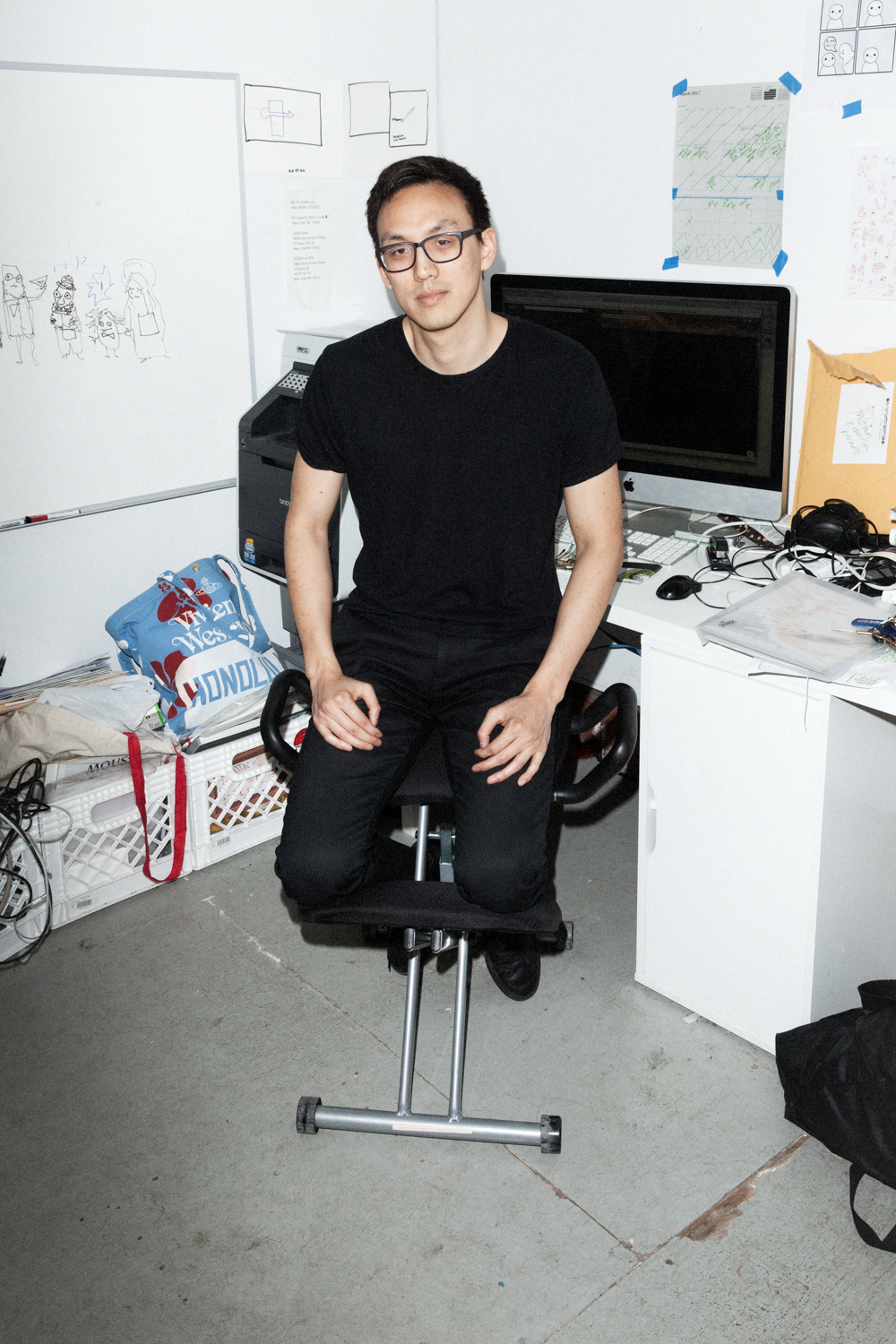VERONICA SO — For as long as I’ve been working with you, the video game development engine Unity has been a core technology for your work. What about this tech interests you?
IAN CHENG — As an artist, a software like Unity is an opportunity because it is a technology that is already established in its own right—in the industry of video game production—but underexplored in the domain of art. In that gap there is a good kind of freedom. I hallucinated that Unity could be used for something else: to make a video game that plays itself. To make simulations. T o make artificial life.
VS — Is identifying the tech a starting point for an artwork?
IC — Sometimes, but leveraging tech is not enough. I’ve learned that I need two other elements: a container and a producer. The container is the container of a “simulation.” It’s an artificial limit and form that I decided on. As an artist, I need to start from within this limit because without it, my energy has nowhere to grow. It’s half-starts in all directions. The container also sets up expectations for a viewer to know how to relate to it. I believe art must begin as an agreement between the viewer and the artist to even have a chance. I want to make art that lets us reach outside of ourselves, but I’m convinced we need to trick or hack ourselves with familiar things at familiar scales as a starting point. After all, I’m only human, and the viewer is only human. We both only have human attention spans. A container is the seductive lure, the interface, the premise, the vessel, to portal myself as the creator and to portal a viewer as the receiver to really go somewhere unfamiliar. It’s a vital consideration to begin making artwork.
VS — It’s very uncommon for an artist to work with a producer, what made you want to work with one?
IC — For the specific container called Emissaries to really find its potential, it needs a producer. The idea of a simulation is, in the context of art, a living, growing thing. Its definition is being shaped right now. It can stretch to encompass AI, synthetic biology, programming habits, the incorporation of influence from stories in the minds of its virtual creatures. It can shrink and become rigid, defined by a simplified narrative or a technical conceit. It can die before it sees the light of day. It’s fragile. So a producer is for me like the coach who really cares about the container’s lifecycle, especially the formative stages. As the producer you have seen other containers live and die before, so you can now better anticipate when to stretch Emissaries, when to shrink it, when to harden it, who gets to influence it, what ingredients to feed it to make it healthy. As the artist, I can of course try to take this role on, but it is overwhelming at any scale beyond a single simplified definition of the container. It’s overwhelming because it’s a very different kind of mindset to sustain than the generative and playful mindset needed to make art that contains more complexity than a single gesture.
VS — Okay, so if the project is a new kind of food... IC — I’m the chef. You’ re the restaurateur.
IC — I’m the chef. Y ou’ re the restaurateur .
VS — So I provide all the inputs and outputs: line chefs, vendors, ingredients. And then you get to play.
IC — Yes, I say I have an idea for a new self-freezing ice cream. I have a sense of the chemical and tech to really do it. I decide to do a chocolate flavor first so I have confidence people have a gateway to appreciate it. You say Okay, clear enough idea. But to really do it right is complicated. You find the gastro-engineer . You source the ingredients. W e agree it should be organic. You adjust the budget. I throw out half the ingredients. I tell you the engineer isn’ t doing it with enough organic processes. The engineer tells us it’ s too expensive. You convince them it’ s a priority for the bigger picture. You tell me we’ re running out of budget. We drop half the launch flavors. I panic and nerd out on the melting point for two days. You steer me back to consider the ice cream shop decor. Eventually, at the last ten percent of the project, when everything is in place and self-freezing ice cream is a reality that we can demo, I actually start putting everything together. This is the one moment where I really get to play.
VS — There’s a kind of rigor towards the end of every project that feels like showtime at a restaurant. You’ re making toppings last minute, timing the level of finish on a garnish, plating it.
IC — I couldn’t manage this crazy process without you as my producer. Because if I was just an artist working by myself, which I once was, getting to that last ten percent would be so psychologically difficult, so increasingly hopeless and foggy. It takes so long just to get all those ingredients right to finally cook together. Narrative premise. Concept design. Lifecycle design. Sound design. Modeling . Animation. Programming persistent systems. Programming AI. Graphics programming . Version control. Graphic design. Exhibition design. Negotiating with contractors. Team morale. Energy . It would be so hard to keep the bigger picture in mind while tending to all these dimensions without you. I would abandon the project long before it finished.
